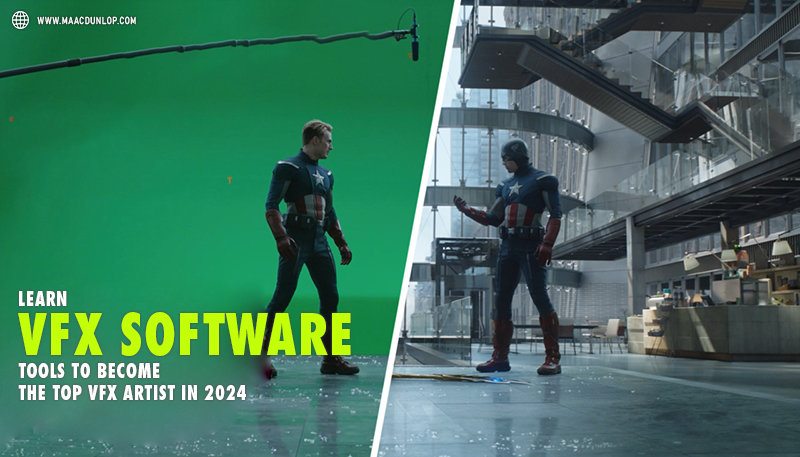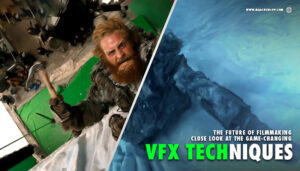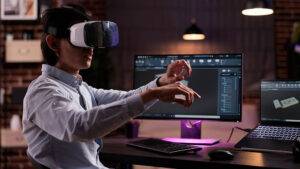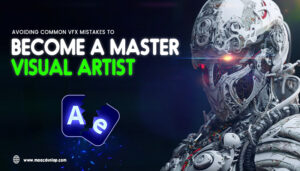Introduction:
In the creative world of visual effects (VFX), staying informative with the several latest tools of VFX will help in making you the ultimate artist of VFX. The era of the 21st century expects higher quality and excellent design across various media, films, advertisements, television, gaming, and virtual reality. Hence, the film industry is growing rapidly and therefore, it is important to be a master of top VFX software tools that can create a successful path and help to become a top VFX artist that needs a VFX institute for guidance. In this blog, we will delve into the VFX software tools to become the top VFX artist in all formats. Check out the basic VFX, and types of VFX, and learn software tools to become the top VFX artist below.
What is VFX?
Let’s be very simple with the term VFX. When you are combining one live-action footage with CG elements and software to give one mind-blowing effect that we see or enjoy is known as visual effects. The creation of movie scenes in still or animation with the help of VFX will blow your mind, help in look more realistic, and support the storytelling. There are several reasons for impacting VFX in films- such as Actor fighting, superhero flying, some dragons fighting, aliens appearing, monster fighting, and many more.
The 3 Types of VFX
VFX is a software that is implemented for special digital effects in movies and series. It has mainly three main categories to discuss. These are:
Computer-Generated Imagery (CGI):
Computer-generated imagery is an imaginary software to create the character of still or animated visual content. The host of the VFX software program also helps the artists to create entire worlds, characters, objects, and environments that do not exist. Moreover, CGI can be as subtle as adding a crowd of spectators cheering on a cricket ground or as overt as a dragon that breathes fire.
VFX Composting:
Anything is possible with VFX for real shots. VFX composting is the connection between live-action video footage with digital assets to add minor details and to look more realistic. Additionally, It combines the work of animators, videographers, and special effects artists to shoot for a film, TV series, or game.
A VFX composting would layer the digital and live-action elements to make them appear naturally on the same platform.
Suppose, you were trying to make an explosion in an action film. As a result, the effects artist would apply the explosion effects for the detonation, the animator would design a digital missile, and the film team would shoot the background.
Lastly, the combination of all these components by the VFX compositor produces a seamless scene.
Motion capture:
Firstly, Motion capture also known as mocap is a process of capturing the movement of people or objects and then shifting these movements to generate a 3D model with computer-generated software.
Secondly, It has become very popular in recent times because of its computer-generated 3D characters that give an extra edge in film and television.
In addition, VFX artists would use motion capture software to generate a 3D skeleton model based on the data they had gathered.
Learn Top VFX Software Tools in 2024:
In the dynamic world of VFX, staying updated with the latest software tools is crucial for any aspiring VFX artist. Also we move into 2024, the demand for high-quality VFX continues to grow across various media, including film, television, gaming, and virtual reality. Therefore, mastering the top VFX software tools can set you on the path to becoming a top-tier VFX artist. Here are the key tools you need to focus on this year.
- Autodesk Maya
The VFX industry recognizes Autodesk Maya as a powerhouse due to its versatility and comprehensive toolset. Professionals widely use Autodesk Maya for 3D modeling, animation, and rendering. Maya offers advanced features like Bifrost for procedural effects, Arnold for high-quality rendering, and a robust animation toolkit. Learning Maya can give you a strong foundation in VFX and open doors to numerous job opportunities in top studios.
- Houdini
SideFX developed Houdini, renowned for its procedural generation capabilities, which makes it a favorite among VFX artists for creating complex simulations and effects. Houdini’s node-based workflow provides immense flexibility and creativity, whether for fluid dynamics, particle effects, or destruction simulations. The VFX industry highly values proficiency in Houdini, particularly for film and high-end TV productions.
- Adobe After Effects
Adobe After Effects is the go-to software for motion graphics and compositing. Its user-friendly interface and extensive plugin ecosystem make it an essential tool for VFX artists working on a variety of projects, from short films to commercials. After Effects excels in creating stunning visual effects, motion graphics, and seamless compositing. Mastering this software can significantly enhance your post-production skills.
- Nuke
Nuke, developed by Foundry, is a leading compositing tool in the VFX industry. It’s used for high-end compositing, image retouching, and visual effects. Nuke’s node-based workflow allows for greater control and precision in combining visual elements. It’s widely adopted by major studios for feature films and TV series. Learning Nuke can elevate your compositing skills and make you a sought-after artist in the industry.
- Cinema 4D
People recognize Maxon’s Cinema 4D for its intuitive interface and powerful animation capabilities. Professionals in motion graphics particularly favor Cinema 4D, and VFX artists also use it to create complex 3D models and animations. Cinema 4D’s integration with other software like After Effects makes it a valuable tool for any VFX artist. Investing time in learning Cinema 4D can diversify your skillset and expand your creative possibilities.
- Blender
Blender is an open-source 3D creation suite that has gained significant traction in recent years. It alsooffers a wide range of tools for modeling, rigging, animation, simulation, rendering, compositing, and motion tracking. Blender’s community-driven development and accessibility make it an excellent choice for both beginners and experienced artists. With Blender’s rapid development cycle, learning it can keep you at the forefront of VFX innovation.
- ZBrush
ZBrush, developed by Pixologic, is the industry standard for digital sculpting and painting. It’s widely used for creating highly detailed models and characters. ZBrush’s unique approach to modeling, which mimics traditional sculpting techniques, allows artists to create intricate details with ease. Mastering ZBrush can enhance your modeling skills and help you create stunning, lifelike characters and creatures. Therefore, join the MAAC Dunlop best VFX institute in Kolkata help give lessons to the learners to become the best VFX artists.
Conclusion:
Becoming a top VFX artist in 2024 requires dedication, creativity, and proficiency in the right tools. Also, the guidance of the MAAC Dunlop top VFX coaching will help you to get success. By mastering software like Autodesk Maya, Houdini, Adobe After Effects, Nuke, Cinema 4D, Blender, and ZBrush, you can lead industries. Continuous learning and staying updated with the latest tools will ensure you remain at the cutting edge of VFX artistry.
Embark on your VFX journey today, and transform your creative visions into breathtaking realities with these powerful software tools.





